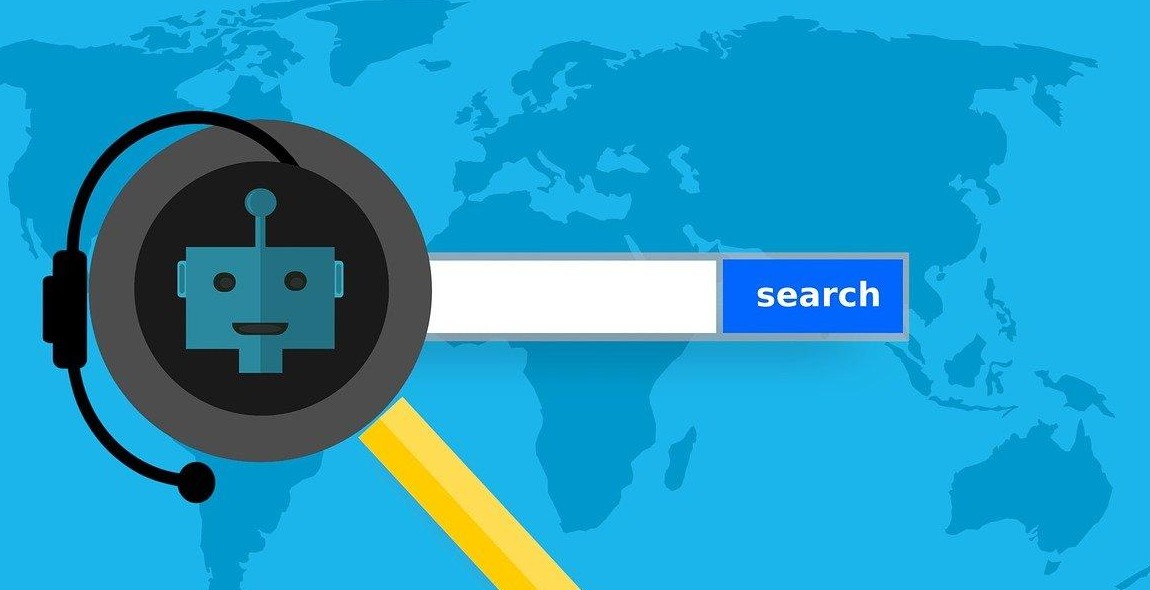Introduction
In this digital age, the term “bot” has become increasingly prevalent. Bots, short for robots, are software programs designed to automate tasks and perform actions that mimic human behavior. They have revolutionized various industries and are becoming an integral part of our everyday lives.
What are Bots?
Bots are computer programs that interact with users or other software systems, using predefined algorithms and rules. They can be programmed to perform a wide range of tasks, from simple to complex, depending on their purpose and capabilities. Bots can be found on websites, messaging platforms, social media platforms, and even in physical devices like voice assistants.
Types of Bots
There are several types of bots, each serving a specific purpose:
- Chatbots: These bots are designed to simulate human conversation and interact with users through text or speech. They can provide information, answer queries, assist in customer support, and even perform transactions.
- Web Crawlers: Also known as spiders or bots, these automated programs navigate the internet, indexing web pages and collecting data for search engines.
- Social Media Bots: These bots are designed to automate social media activities, such as liking posts, following users, or posting content. They can be used for marketing purposes or to manipulate social media trends.
- Trading Bots: These bots are used in financial markets to execute trades automatically based on predefined algorithms. They can analyze market data, identify trends, and make buy or sell decisions.
Bots have a wide range of applications and can greatly enhance efficiency and productivity in various industries. Understanding how bots work and their capabilities is essential in harnessing their potential.
How Bots Work
Understanding how bots work is essential in demystifying their capabilities and potential. Bots are software applications designed to automate tasks and interact with users in a conversational manner. They have become increasingly popular due to advancements in technology, particularly in the fields of natural language processing (NLP), machine learning (ML), and API integration.
Bot Architecture
Bot architecture refers to the underlying structure and components that enable bots to function. At the core, bots consist of three main components:
- Input Handler: This component receives and processes user inputs, which can be in the form of text, voice, or other media. It utilizes NLP techniques to understand and interpret user intent.
- Logic Handler: The logic handler processes the interpreted user intent and determines the appropriate response or action. It leverages ML algorithms and predefined rules to make decisions and generate relevant output.
- Output Handler: This component formats and delivers the bot’s response back to the user. It can generate text, voice, or visual outputs depending on the platform and user preferences.
Natural Language Processing (NLP)
NLP enables bots to understand and interpret human language. It involves various techniques, such as:
- Tokenization: Breaking down text into individual words or tokens.
- Part-of-Speech (POS) Tagging: Assigning grammatical tags to words.
- Sentiment Analysis: Determining the emotional tone of text.
- Named Entity Recognition (NER): Identifying and classifying named entities like people, places, or organizations.
NLP algorithms analyze user inputs to extract meaning and intent, allowing bots to provide accurate and relevant responses.
Machine Learning (ML)
Machine learning plays a crucial role in bot development by enabling bots to learn from data and improve over time. ML algorithms are trained on large datasets to recognize patterns, make predictions, and improve overall performance. Bots can use ML to understand user preferences, personalize responses, and adapt to changing contexts.
API Integration
API integration allows bots to interact with external systems and services, expanding their capabilities. Bots can consume data from APIs to provide real-time information, perform actions on behalf of users, or integrate with third-party applications. API integration enables bots to access a wide range of functionalities, including retrieving weather information, booking flights, or making online purchases.

Applications of Bots
Bots have become increasingly popular in various industries due to their ability to automate tasks, provide instant responses, and enhance customer experiences. Let’s explore some of the key applications of bots:
Customer Service
Bots have revolutionized customer service by providing round-the-clock support and quick responses to customer queries. They can handle repetitive and frequently asked questions, freeing up human agents to focus on more complex issues. With their natural language processing capabilities, bots can understand and respond to customer inquiries in a conversational manner, providing personalized assistance.
Moreover, bots can be integrated with knowledge bases and databases, enabling them to retrieve relevant information on products, services, or policies. This ensures that customers receive accurate and up-to-date information, enhancing their overall experience and satisfaction.
E-commerce and Sales
Bots play a vital role in e-commerce and sales, facilitating personalized shopping experiences and driving sales conversions. By analyzing customer preferences and purchase history, bots can recommend products that align with individual tastes and needs.
Additionally, bots can assist customers in navigating through the online store, providing product information, pricing details, and assisting with the checkout process. They can also handle order tracking, returns, and refunds, ensuring a seamless customer journey from start to finish.
Information Retrieval
Bots excel at retrieving and organizing vast amounts of information quickly. They can be deployed in various domains, such as news, research, and education, to gather and present relevant data to users. Bots can crawl websites, analyze content, and extract key information, providing users with accurate and up-to-date information in real-time.
Furthermore, bots can aggregate information from multiple sources, eliminating the need for users to visit multiple websites or applications to access the desired information. This streamlines the process, saving time and effort for users.
Task Automation
Bots are powerful tools for automating repetitive and time-consuming tasks. They can be programmed to perform a wide range of activities, such as data entry, report generation, file organization, and data analysis. By automating these tasks, bots can significantly increase productivity, reduce errors, and free up human resources for more strategic and value-added activities.
Moreover, bots can integrate with various software systems and APIs, enabling seamless data exchange and workflow automation. This integration allows bots to interact with multiple applications and perform complex tasks that span across different systems, further enhancing efficiency and productivity.
In summary, bots have diverse applications across industries, including customer service, e-commerce, information retrieval, and task automation. With their ability to automate processes, provide instant responses, and streamline workflows, bots are transforming the way businesses operate and improving the overall user experience.
Benefits of Bots
Bots have revolutionized the way businesses operate and interact with their customers. Here are some key benefits of using bots:
- Enhanced Customer Service: Bots can provide 24/7 customer support, instantly responding to inquiries and resolving issues. This improves customer satisfaction and helps businesses build strong relationships with their clients.
- Increased Efficiency: Bots automate repetitive tasks, freeing up human resources to focus on more complex and creative work. This increases productivity and allows businesses to handle a higher volume of customer interactions without compromising quality.
- Cost Savings: By reducing the need for human intervention, bots can significantly lower operational costs. Businesses can save on labor expenses while still delivering excellent customer service.
- Personalized Experiences: Bots can analyze customer data and provide tailored recommendations or suggestions. This level of personalization enhances the customer experience and helps businesses deliver targeted marketing campaigns.
- Improved Sales and Lead Generation: Bots can engage with potential customers, answer their questions, and guide them through the sales process. This can increase conversion rates and generate more leads, ultimately boosting revenue.
Challenges of Bots
While bots offer numerous benefits, there are also challenges that need to be considered:
- Technical Complexity: Developing and maintaining bots can be technically challenging. It requires expertise in programming languages, artificial intelligence, natural language processing, and machine learning. Additionally, ensuring the bot’s accuracy and reliability can be a continuous effort.
- Integration with Existing Systems: Integrating bots with existing systems and databases can be complex, especially in large organizations with legacy systems. This requires careful planning and coordination to ensure seamless operation and data synchronization.
- Privacy and Security Concerns: Bots handle sensitive customer information, which raises concerns about data privacy and security. Businesses need to implement robust security measures to protect customer data and comply with relevant regulations.
- Customer Acceptance and Trust: Some customers may be skeptical or hesitant to interact with bots. Building trust and ensuring a positive user experience is crucial to overcome this challenge. Transparency about bot usage and clear communication can help alleviate customer concerns.
- Ethical Considerations: Bots need to be designed and programmed ethically, avoiding biases and discriminatory behavior. Developers must ensure that bots do not engage in harmful or unethical activities, respecting user privacy and maintaining fairness in their interactions.

Future of Bots
The future of bots is incredibly promising, thanks to advancements in artificial intelligence (AI) and machine learning (ML). These technologies have revolutionized the capabilities of bots, allowing them to perform complex tasks and provide more personalized experiences for users.
Advancements in AI and ML
AI and ML have significantly improved the ability of bots to understand and respond to human interactions. Bots can now analyze vast amounts of data, learn from user behavior, and adapt their responses accordingly. With each interaction, bots become smarter and more efficient, providing users with a seamless and personalized experience.
Enhanced User Experience
The future of bots lies in delivering enhanced user experiences. Bots can now offer real-time assistance, answer queries, and provide recommendations based on user preferences. They can seamlessly integrate with various platforms and devices, allowing users to interact with them through voice commands, chat interfaces, or even augmented reality. This level of convenience and personalization will continue to evolve, making bots an indispensable part of our daily lives.
Integration with IoT
Bots are increasingly being integrated with the Internet of Things (IoT), enabling them to control and interact with connected devices. This integration opens up a world of possibilities, where bots can automate tasks, monitor and adjust settings, and provide valuable insights based on the data collected from IoT devices. Imagine a bot that can control your smart home, manage your energy consumption, and even order groceries based on your usage patterns.
In conclusion, the future of bots is bright. With advancements in AI and ML, enhanced user experiences, and integration with IoT, bots are poised to become even more powerful and indispensable in our daily lives.
